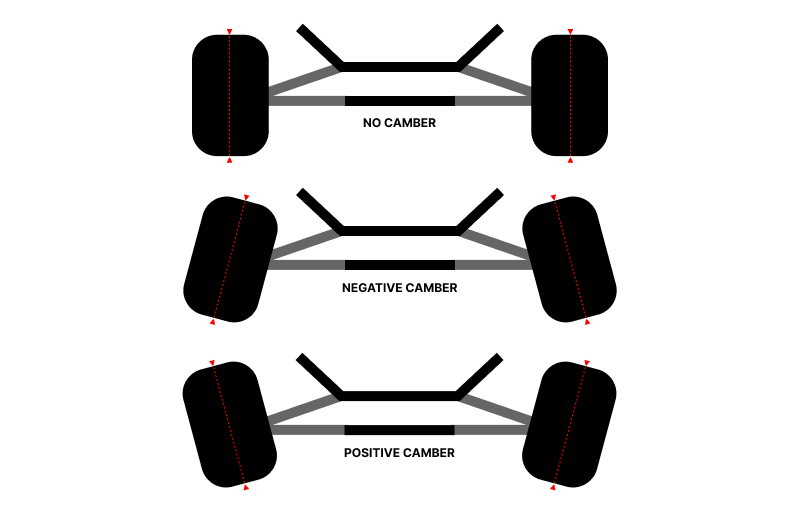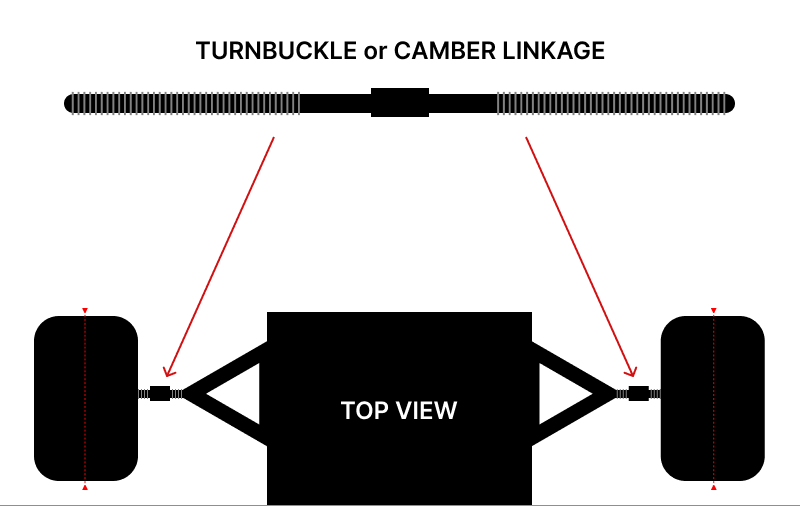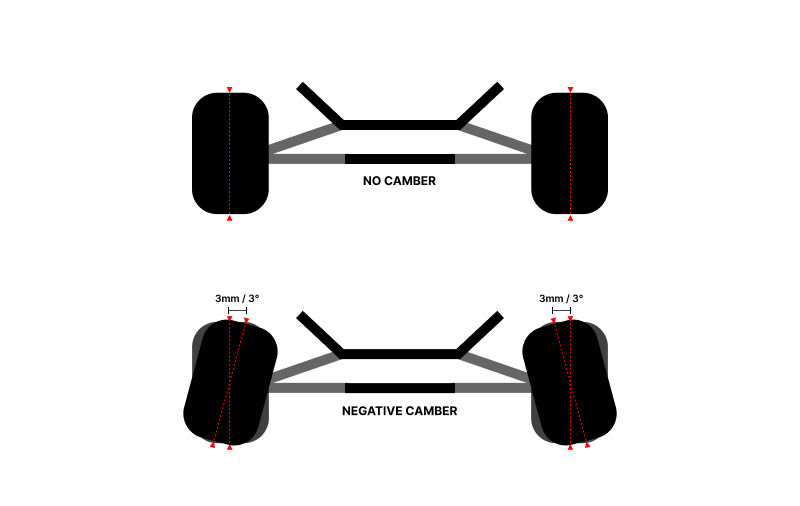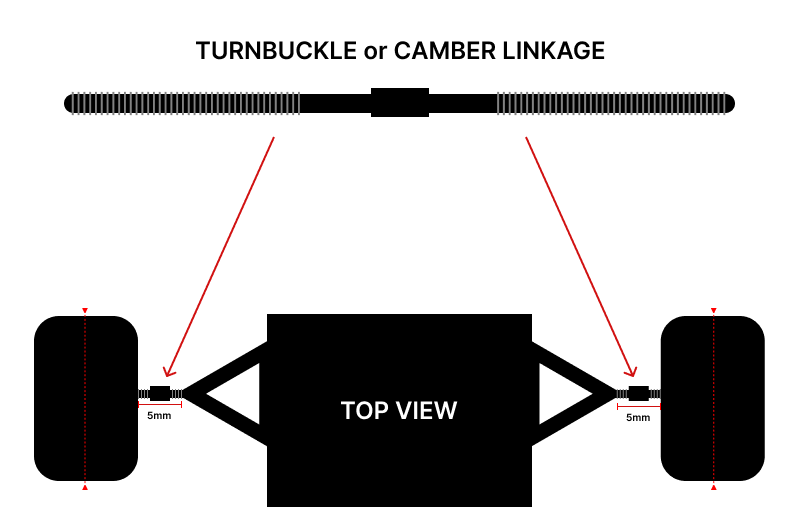Camber is a crucial aspect of RC drift car setup, influencing grip, tire wear, and overall performance.
So it's not just about the stance and how cool it looks to others (...sometimes it is)
It's actually important and today you're about to be an expert on it.
What is Camber?
To put it quite simply camber is your wheel angle towards or outwards of your chassis.
I've used my artistry skills and drawn a diagram below, it's a front-on view.
- No Camber: The wheel is perfectly vertical.
- Negative Camber: The top of the wheel tilts inward toward the car's chassis. This is the most common setting for RC drift cars.
- Positive Camber: The top of the wheel tilts outward away from the chassis. This is generally not used in RC drifting.

Why is Camber Important in RC Drifting?
Negative camber provides several benefits in RC drifting:
- Increased Grip: Negative camber helps maximize the contact patch of the tire with the surface, especially during cornering. This leads to better grip and more controlled drifts. Think of it this way: when you drift, the car leans. Negative camber helps the outside tire maintain better contact with the ground.
- Improved Steering Response: With negative camber, the car tends to turn in more quickly and precisely. This is crucial for initiating and maintaining drifts.
- Tire Wear (Consideration): You will notice your wheels will wear unevenly, so this is just something to consider. It's completely normal and nothing to be afraid of.
How Do You Adjust Camber on an RC Drift Car?
Most RC drift cars have adjustable camber links or turnbuckles. These are small rods that connect the suspension arms to wheel hubs.

- Locate the Camber Links/Turnbuckles: These are usually located on the upper suspension arms.
- Adjust the Length:
- Shortening the link/turnbuckle: Increases negative camber (top of the wheel tilts in more).
- Lengthening the link/turnbuckle: Decreases negative camber (top of the wheel tilts in less).
- Make Small Adjustments: Camber adjustments should be made in small increments (e.g., 0.5 degrees at a time). It's easy to overdo it.
- Check and Repeat: After adjusting camber on one side, check the other side and make adjustments as needed to ensure both sides are equal. Use a camber gauge or a setup board for precise measurements.
Finding the Right Camber Setting:
There's no one-size-fits-all camber setting. The ideal setting depends on several factors:
- Driving Style: Aggressive drivers often prefer more negative camber.
- Wheel Type: Different spec wheels perform differently with various camber settings.
- Track Surface: A smooth track may require less camber than a rough track.
- Car Setup: Other suspension settings, such as caster and toe, also affect the optimal camber setting.

Tips for Adjusting Camber:
Be Consistent: Make sure both sides of the car have the same camber setting.
Use a Camber Gauge: A camber gauge will help you make precise adjustments.
- Use a Ruler: If you have no camber gauge, use a ruler and measure the turnbuckles length in mm or cm, make sure both sides match.

Keep a Record: Keep a record of your camber settings and how they affect your car's performance. This will help you fine-tune your setup over time.
Test and Tune: The best way to find the perfect camber setting is to test your car on the track and make adjustments based on its performance.
Start with a moderate negative camber setting (e.g., -2 to -4 degrees or a couple of mm) and experiment to find what works best for you. Practise, practise and practise some more.
It's a marathon not a sprint. Find what feels good for YOU and the way you DRIVE.
Let me know if you found this guide helpful.